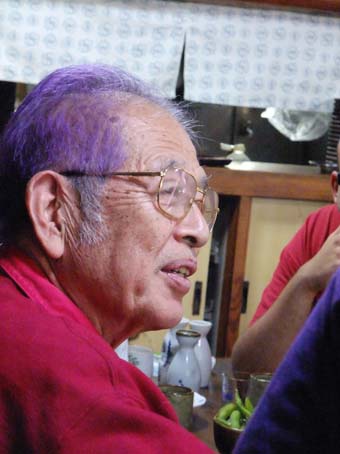The Ken has no Tsuba perpendicular to the blade. On the contrary the guard is in line with it. Therefore your forefinger often slips on top of the guard and getting close to the blade.
In a recent class Sensei explained that the use of the fingers were of utmost importance in order to direct the edges properly. After hours of training I came up with my own types of grips of this strange guard. I share it here for those who are trying to understand this rather strange weapon. These are my discoveries so they can be totally wrong (don’t trust me).
Problems encountered:
- the finger(s) keep covering the guard
- the sword is heavy and hard to keep in hand without a proper grip
- the grip on the sword can be reverse
- the design of the guard allows more grips that in a reguler japanese sword
- the momentum of the sword is important
- the body is moving a lot and the straight sword is often used like a whip
All the above has made me think on a set of grips. I called these 劍を握る, Kenwonigiru or holding the Ken.
The following are a few pictures showing the most common grips I ended up with, there might be others yet to be discovered.
1. Reverse Grip:

The blade is upside down and your fingers wrap the tsuba. Ideal for a kind of Kage no Kamae, hiding the blade behind the back. Can be done with left hand also.
Important: depending on the size of the blade, it is possible to bend the arm a little so that the tip of the sword is not injuring your back or your armpit while changing the position of the sword.
This grip allows the body to move freely and/or to change hand easily as the main part of the tsuka is free. Changing hands is important.
You can also use this grip when hitting the opponent with the pommel of the sword. In that case the blade is supported by the arm covering it. It is like giving a Tsuki with the kashira.
2. Thrusting at short distance:
When thrusting with your body behind the blade is flat, palm up. The following pictures show the same grip from above and under. As I have small hands it is easier for me to only use the forefinger but it can be done with a grip 2 fingers and 2 fingers.


Please note that on the pictures above the blade is the extension of the hand. It is like a sixth finger.
You can use either the right hand or the left hand. The Ken is used like a hanbô and change side/hand in the movements.
This grip can also be used to slam uke’s body, head, leg or weapon in turning movement of the body.
3. Yubi Ippon Jûbun:
This is the most common grip that comes naturally because of our habits in Japanese swordmanship. The forefinger usually supported by the Tsuba keep sliding up towards the blade. I thought is was a mistake and tried to correct it until sensei said that finger positioning was important.

The extended forefinger gives more precision and power to your movements when thrusting , deflecting, or blocking.
4. Yubi Nippon Jûbun:
This grip is similar to the previous one but is more stable in case of hard encounter. I discovered that I was using both. Don’t think too much, let your body flow do it for you.

I hope that these notes willficial help you. I do not think these are the only Kenwonigiru that can be done with the Ken but they cover many possibilities. I remind you that these are not “official bujinkan waza”, but the result of my recent personal training and ideas.
As this is “ji an nen” feel free to develop your own ideas and thoughts during the jyanen dedicated to Jian Nen.*
*for the newcomers please my previous post “Jyanen or Jian Nen”
https://kumafr.wordpress.com/2013/02/12/jyanen-or-jian-nen/

























